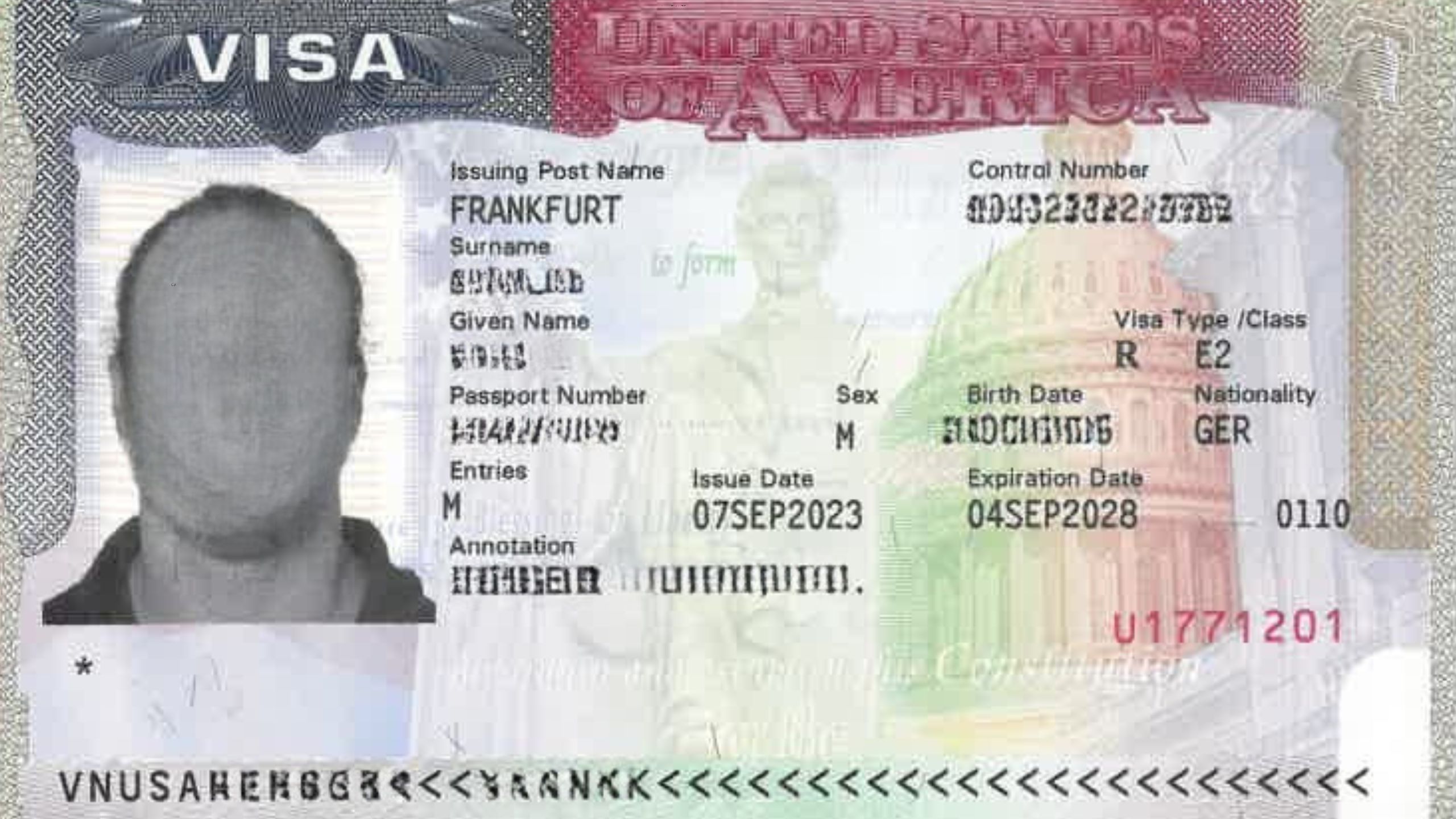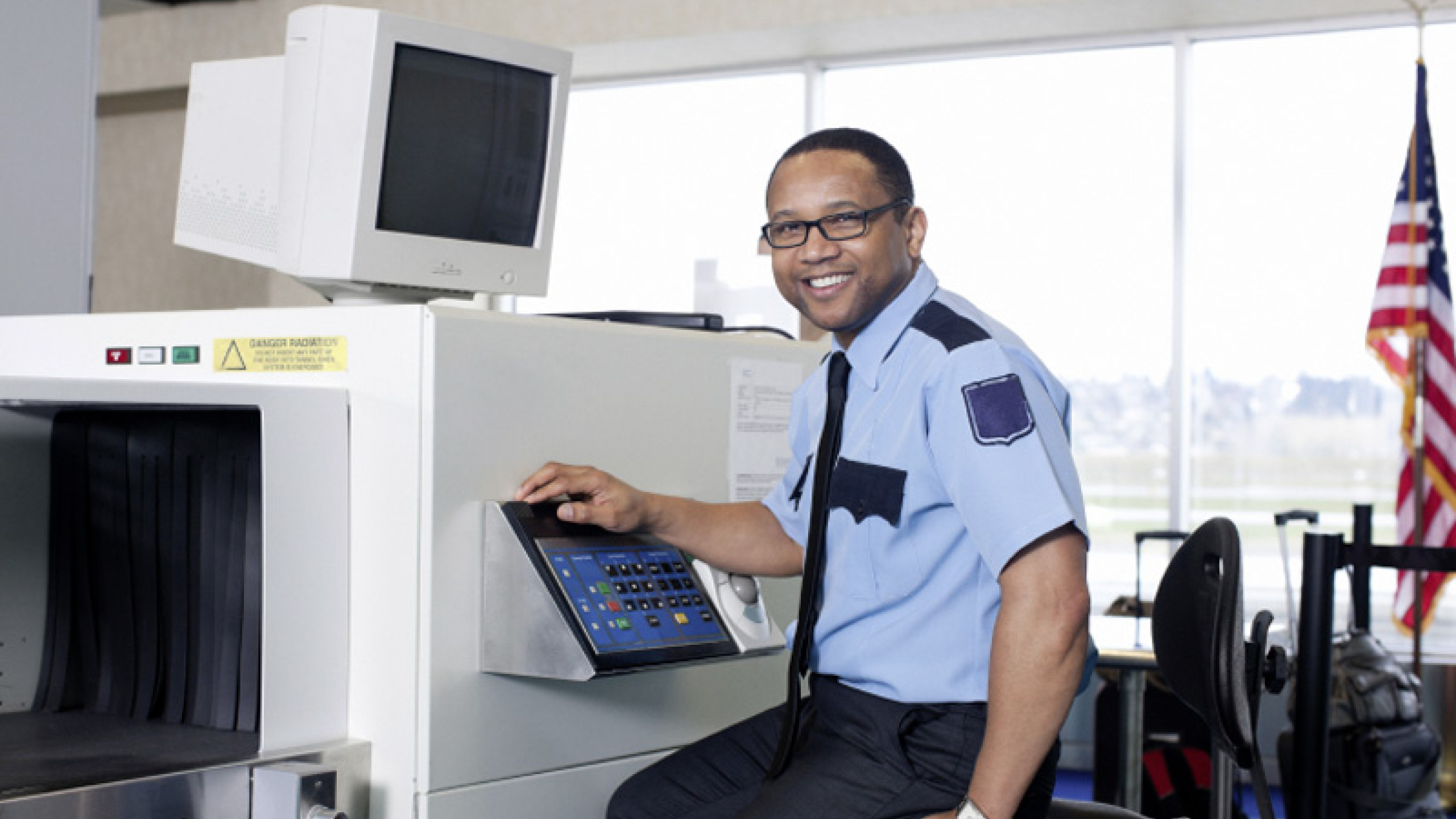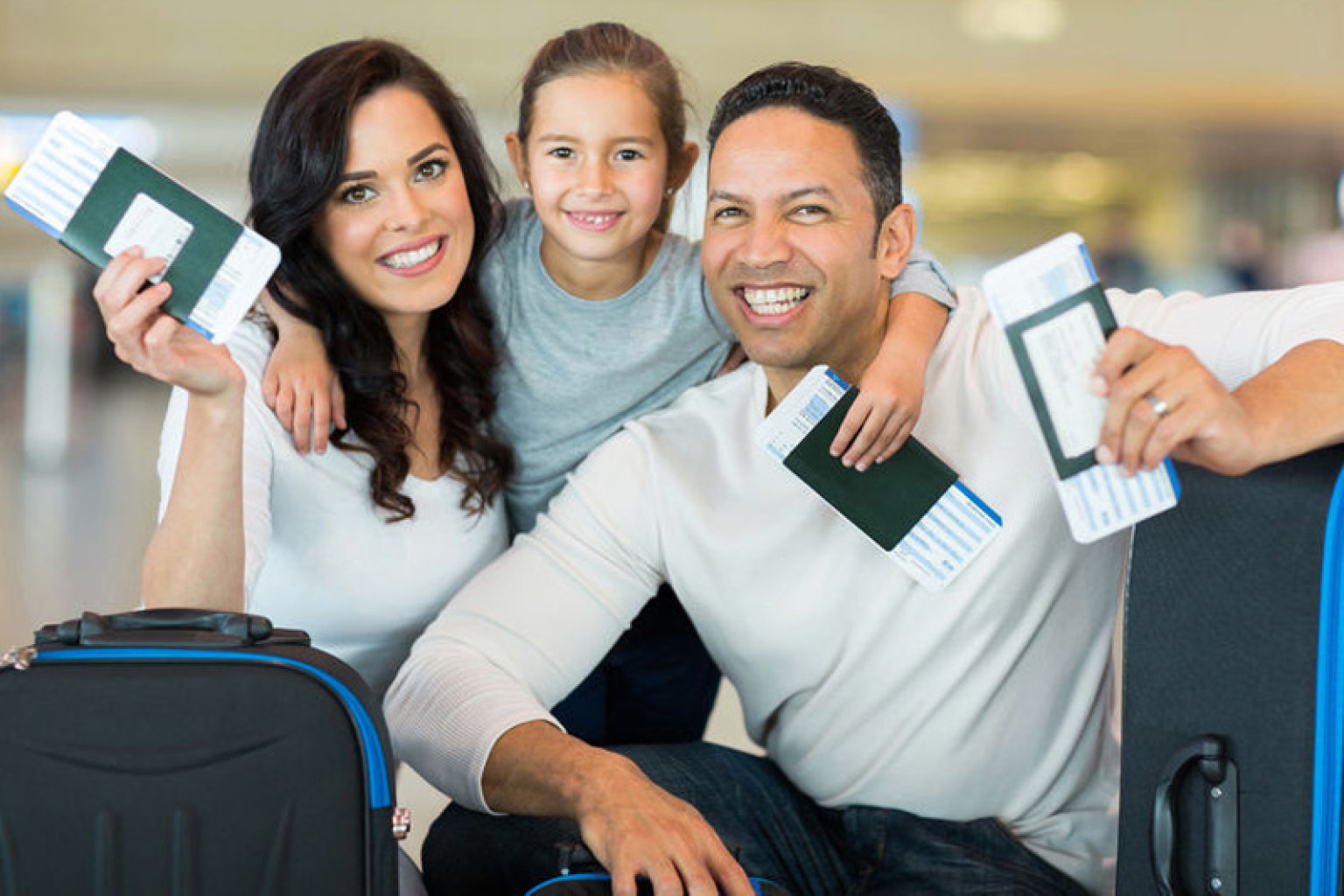The E-2 visa, also known as the Treaty Investor Visa or Investor Visa, is a classic work visa for the USA. Any company thats wants to invest considerable capital or has invested in the U.S. economy can - regardless of a previous business activity in the home country – send employees to the U.S. via an E-2 visa. We will be happy to provide you with comprehensive and individual advice on this work visa and help you with the application process.
Visa category: work visa
Target group: Investors (and their employees) planning to set up a branch or company in the USA
Validity: 5 years
Lengsth of stay: up to 2 years per entry
Characteristics: based on investments
The E-2 visa is a subcategory of the E visa and grants holders work and residence permit for the USA. Once a company has successfully applied for an E-2 visa for the first employee, it is considered to be "E-registered". In this case, additional employees in this company can be hired via a simplified application process also receive an E-2 visa.
Employees are then entitled to full employment, both under a longer-term work assignment, as well as for several single business trips.
This work visa is based on bilateral treaties in the context of investment projects in the USA. Currently, there are approximately 80 nations that maintain such relationships with the United States. Only nationals of the respective treaty countries, including naturalized persons, can obtain this status.
Many European countries are treaty countries, including Germany, Austria, and Switzerland.

In order to be eligible for the investor visa, the company must fulfill certain requirements on the one hand, and the employees themselves on the other.
Minimum period of employment
In contrast to the L visa, the E visa category does not require proof of a minimum period of employment in the company. As long as a new employee can prove that he / she has the necessary specialised knowledge, he/she can also obtain an E-2 visa.
Before employees can obtain an E-2 visa, the company must be able to provide the following evidence as part of an E-registration:
Employees must also meet certain conditions to be eligible for an E-2 visa.

The validity of the E-2 visa varies depending on the nationality of the applicant. The exact duration is determined with the help of the so-called reciprocity schedule. German nationals, for example, receive an E-2 visa with a maximum validity of 5 years.
However, consular officers also have the option of limiting the duration of the visa. This is the case, for example, if the company is quite small or has relatively low investment capital.
The residence status is granted by the immigration officer at the border for a maximum of 2 years at a time until the visa has expired and must be reapplied for in the consular procedure. The exact duration of stay is noted on the I-94 form of the E-2 visa holder. An extension of this right of residence is generally possible as long as the registration of the US company is valid, an employment contract exists and the visa is valid.
Unlike many other work visas for the USA, the E-2 visa can theoretically be extended indefinitely. The prerequisite for this is that the company continues to exist and that all other conditions for E-registration continue to apply.
If the company has more than 25 permanent employees, E-2 registration can be simplified. Otherwise, the initial registration process must be completed again.
The cost of the E-2 visa is 283.50 € (315 $) per applicant. This standard application fee charged by US consulates and embassies must be paid by each applicant and is neither refundable nor transferable.
The processing fee can be paid either by online bank transfer, online payment by debit card or cash payment at a bank.
Normally, this fee can be used to make an appointment within one year of the payment date.

Furthermore, certain E-2 applicants may incur additional costs:
Further information about the different visa fees, other possible costs and the current Payment methods can be found on our fees page.
It is important to emphasize that a thorough understanding of the process and careful planning of the necessary steps are essential to successfully applying for an E-2 visa. From choosing the right type of visa according to the purpose of travel to correctly completing the application forms and preparing for the visa interview, there are many important aspects to consider.
The following section explains the individual steps for applying online for an E-2 visa for the USA and provides guidelines for a successful visa application.
As a rule, applicants for the E-2 visa between the ages of 14 and 79 must go through the consular process, which means that in most cases the visa is applied for during a personal interview at a responsible US representation (US consulate or US embassy) in the home country.
It is essential that all requirements for applicants are met and that all necessary documents are available in advance of the visa application.
As the first registration, i.e. the first E-2 visa application submitted by a company, must first be checked by the company itself, this takes considerably longer. A processing time of approx. two to six months can be expected. Added to this is the waiting time until the interview appointment. The availability of these appointments depends on the season as well as on the respective consulate itself. In general, however, you should allow around six months for the entire application.
After successful E registration, there is no need for a detailed review of the company. In this case, employees only have to factor in the waiting time until the interview appointment.
For both initial and subsequent registrations, employees will be sent their passport with the E-2 visa approximately one week after the consulate appointment.
To apply for their E-2 visa for the USA, applicants must follow the steps below:
The first step to a successful E-2 application for the USA is to fill out the electronic visa application form DS-160 about the website of the U.S. Department of State.
The online application form must contain detailed information about the applicant and the planned stay in the USA. Please have the following documents ready to complete the online DS-160 form:
Just a few days after submitting your DS-160 form, you can check the status of your visa application online.
Did you know that the professional processing and return of your DS-160 is part of our service is?
Create your visa profile on the website of the Visa Information Service, which can then be used to apply for the E-2 or any future visas.
Here you can also pay the visa processing fee and make an appointment for the visa interview.
When you commission our US Visa Service, we create the required online profile, pay the consular visa application fee and arrange the appointment for the personal interview with the US consular officers.
Show up personally on interview day in the US consulate or at the US embassy. Your documents will be checked there and you will be interviewed by the consular officers.
The following documents must be prepared and brought along for the appointment at the US sonsulate or US embassy:
Be prepared to answer questions about your visa application, your planned stay in the US and other relevant topics.
Generally, E-2 visa applicants are notified at the end of their visit to the US consulate or embassy whether or not their visa application will be approved.
Our visa consultants will prepare you perfectly for this important appointment and provide you with the necessary documents to ensure that your visa interview runs as smoothly as possible.
If your E-2 visa application is approved, you will receive your passport with the E-2 visa returned by post or can arrange a pick-up appointment.
The E-2 visa contains a variety of information that identifies the visa holder and defines his or her rights and restrictions while in the United States.
It is crucial that you review this information carefully and ensure that it meets the requirements of your planned stay in the USA.

Here are some of the dates and information that can be found on a US visa:
Visas for the United States of America are issued by the US consulates and embassies.
Normally, US consular officers decide whether to issue a visa for the USA on the day of the visa interview. Thus, applicants for the E-2 visa usually learn during the interview appointment whether the visa will be granted or not.
You can check the status of your US visa application online.
Your E-2 visa was granted verbally by the US officials and is now being finalized.
After the E-2 visa has been printed or issued in the passport, the passport with the corresponding US visa will be sent by post.
In some cases, US consular officers determine not to approve the E-2 visa immediately and issue a visa denial under Section 221(g) of the Immigration and Nationality Act (INA). The consequence of this is known as administrative processing.
The US visa application therefore requires a further security check and is subject to additional processing steps. Additional documents or information may be required from you.
If the US officials conclude that you do not qualify for the E-2 category, your E-2 visa to the US will be denied. The denial does not have to be justified, but applicants who are denied a visa are usually given further instructions on the day of the interview appointment or sent a denial letter after a certain processing time.
The reasons vary greatly depending on the visa category and applicant (e.g. assumption of an intention to immigrate, suspicion of illegal employment, incorrect application documentation).
First of all, after a visa refusal In principle, it is possible to submit a new application for an E-2 visa at any time. Theoretically, there is no waiting time for applicants until the next submission.
In our experience, it is only advisable to reapply for the same category if the conditions or circumstances have changed since the first visa application and you are able to provide evidence of these changes or new circumstances.
It makes little sense to apply for a new visa if you still do not meet the requirements of the respective visa category (e.g. proof of intention to return to your home country, financial means, proof of specialized professional knowledge, etc.). In practice, a new E-2 visa can therefore usually only be (successfully) applied for after several months or even years.
After a visa refusal, applicants must start the visa application process all over again. In addition, an alternative visa category may be considered for a work visa under certain circumstances. This should be carefully checked on a case-by-case basis. However, no appeal can be lodged against a visa refusal.
The consequences of a refused E-2 visa for the applicant depend on the reason for refusal.
Although the US authorities do not have to justify the refusal, you can politely ask for the reason for the refusal at the interview appointment at the US consulate or embassy. This information will help you if you wish to reapply for the E-2 visa.
Your E-2 visa application should be prepared carefully and conclusively by the second attempt at the latest. This includes choosing the correct category, filling out the DS-160 online form completely and correctly and collecting meaningful evidence.
We advise you on the choice of the appropriate visa category and take over the complete processing for you or your company.

Many applicants mistakenly assume that an approved US visa automatically grants entry to the United States. In fact, an E-2 visa in the passport does not automatically grant entry. Legally speaking, a US visa is not a residence permit, so even with an approved visa there is no guarantee of entry.
A valid US visa allows applicants to apply for entry into the US upon arrival at a border crossing such as an airport. Ultimately, the decision on entry rests with U.S. Customs and Border Protection border officials. They decide whether applicants may enter the country and, if so, for how long. Therefore, entry may be denied under certain circumstances.
After receiving your entry permit, it is advisable to go online to the I-94-website or by checking the entry stamp in your passport to see how long you are legally allowed to stay in the USA.

By the way: With Global Entry, certain biometrically registered and security-checked travelers can complete entry formalities independently and automatically at almost all major US airports. This allows foreign nationals to avoid long waiting times and enter the USA more quickly.
Companies, as well as employees with E-2 visa enjoy a number of benefits:
Due to these considerable advantages, companies should always check in advance whether they are eligible for e-registration and thus in the future much time and costcompared to, for example, an L visa.
Restricted access may mean that not all employees can benefit from a company's e-registration:
Spouses and unmarried children under the age of 21 can apply for derivative status, which allows them to obtain an E-2 visa with an attachment.
After entering the US, spouses with a derivative E-2 visa can apply for a General Employment Authorization Document (EAD), either with the US Citizenship and Immigration Services (USCIS) or through Border Patrol agents upon entry. This means that they are not tied to a specific job or the company of the main applicant and can work in the USA independently of their partner.
This work permit is initially issued for two years and can be extended for a further two years, up to the maximum duration of stay of the main applicant.
Children of E-2 holders have the right to attend educational institutions (schools/universities) but are not allowed to engage in paid work. Once they reach the age of 21, they must either change their non-immigrant status or leave the country.

Global Entry can be used with almost all US visas and even ESTA authorization. If you have an E-2 visa, you can apply for Global Entry membership and enter the US 
Many companies wonder what happens to the company-bound E-2 work visa when visa holders no longer work for the company.
If the visa holder is dismissed or resigns, the work visa for the USA automatically loses its validity. The derived visas of any accompanying family members also lose their validity when the employment relationship ends, as these are linked to the visa of the main applicant.
This means that former visa holders may no longer enter the country with an E-2 visa once their employment relationship has ended, even if the work visa is theoretically still valid. If affected visa holders wish to travel to the USA for tourism or business in the future, they must reapply for an ESTA authorization or a corresponding visa, depending on the purpose or depending on what activities are carried out there and for how long.
Practical tip: In order to avoid discrepancies or problems with subsequent entries after the visa has been terminated, it is advisable to inform the US consulate about the new work situation. For this purpose, it is sufficient if the responsible company representative (e.g. HR manager, supervisor, board member, etc.) sends an e-mail to the responsible consulate with the request to invalidate the visa of the former employee. If possible, a copy of the visa should be attached. The consulate will then make a corresponding note in the system so that the US officials at the US border are also aware of this.
In some cases, visa holders are even contacted directly by the US consulate with the request to send in the visa so that it can be invalidated. In other cases, the E-2 visa is simply invalidated by the border official the next time you enter the USA.
Our recommendation: By sending a short notification to the relevant US consulate, companies can protect themselves and, above all, be sure that entry with the previously valid work visa is no longer possible. Don't take any risks and prevent possible abuse with the company-specific E-2 visa.
If the ownership structure of a company with a valid E-2 visa or E-2 registration changes, this has a direct impact on the validity of the e-registration and all e-visas based on it.
If the majority of your company, despite its existing E status, has since been transferred to US ownership, for example, you can no longer send employees on E status to the USA.
E-2 work visas automatically lose their validity. The derived visas of any accompanying family members also lose their validity due to the "loss" of the E-2 registration, as these are linked to the visa of the main applicant.
This means that visa holders are no longer allowed to enter the country with the visa, even if the work visa is theoretically still valid.
Following a change in ownership, the company must examine (or have examined) whether a new e-registration can be applied for:
Only if the requirements continue to be met (e.g. new owners are also from an E contracting state) is it possible to continue the E status. Otherwise, other visa categories must be checked.
Wir und unsere Partner nutzen Cookies, um personenbezogene Daten wie z.B. Browsing-Daten zu speichern und abzurufen, um z.B. Inhalte und Werbung bereitzustellen und zu personalisieren sowie die Verwendung der Website zu analysieren und das Benutzererlebnis zu verbessern. Sie erfahren mehr über die Zwecke, für welche wir und unsere Partner Cookies einsetzen, wenn Sie unten auf den Button „Cookie Einstellungen“ klicken. Hier können sämtliche Einstellungen auch geändert werden. Nachträglich kann man jederzeit seine Cookie-Auswahl überdenken oder seine Einwilligung widerrufen, indem man auf den Link zu den Cookie-Einstellungen im Footer unserer Webseite klickt. Beachten Sie bitte, dass das Blockieren einiger Cookie-Typen unsere Möglichkeiten zur Bereitstellung von auf Ihre Interessen zugeschnittenen Inhalten haben kann oder einige Funktionen der Webseite nur eingeschränkt zur Verfügung stehen.
Durch klicken auf “Alle Cookies akzeptieren” stimmen Sie unserer Nutzung und der Weitergabe Ihrer Daten an unsere Partner zu.